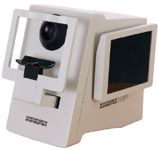Article
Perimeter technology promises earlier detection of glaucomatous changes
A new visual function test (Heidelberg Edge Perimeter, Heidelberg Engineering GmbH) has been launched. Developed for the early detection of functional damage in glaucoma patients, the instrument uses a unique stimulus called flicker defined form to target magnocellular projecting retinal ganglion cells.

Key Points
Toronto-New perimeter technology (Heidelberg Edge Perimeter, Heidelberg Engineering GmbH) has been introduced to aid in earlier detection of glaucomatous visual field changes. The instrument is designed to investigate early functional damage but works in combination with the company's confocal laser scanning system (Heidelberg Retina Tomograph) to integrate information about structure and function for improved diagnosis and monitoring of disease progression.
John Flanagan, PhD, professor, Department of Vision Sciences and Ophthalmology, University of Toronto, and School of Optometry, University of Waterloo, Ontario, developed the new perimeter technology and explained that the new analysis software shares a data platform with the confocal laser scanning system for combined structure and function mapping. Printouts blend the displays from both devices to provide an image of the interaction between structural and functional damage.
"The real key for me is the excitement of combining the structure and function. It taps into the same operating system that is used by all of the [company's] instruments. By using the same database, you are able to combine the two comprehensively," Dr. Flanagan said.
For evaluation of functional damage, the perimeter technology uses a unique new stimulus called flicker defined form. The stimulus consists of flickering black-and- white patterns that create an illusionary edge that the patient perceives as a gray circle against a mean luminance background.
On a random dot screen, the 5° stimulus region within a background of random dots is flickered in counterphase at a high temporal frequency of 15 Hz; while the majority of the dots on the screen are in a black-white pattern, the dots within the stimulus switch from white to black.

"The motivation behind it was to find a magnocellular-driven target," he continued. The magnocellular projecting retinal ganglion cells are particularly sensitive to high-frequency and high-contrast stimuli such as in flicker perimetry. Although there is some evidence to suggest that these cells are the first to sustain damage in glaucoma, it may be that the effects of magnocellular retinal ganglion cell loss are more readily detectable with visual function-specific perimetry because they are less abundant.
In either case, this subset of ganglion cells is highly sensitive to functional loss due to early glaucoma, thus its selection as the target for the device's selective stimulation of the magnocellular system.
"There is lot of evidence that if we can tap into that system, we can pick up early glaucoma more efficiently," said Dr. Flanagan, who also is a professor in the School of Optometry at the University of Waterloo.
The concept is similar to that of frequency doubling in that it analyzes certain cells in one of the visual pathways. Frequency doubling, however, principally is a flicker instrument, whereas the new instrument uses flicker to generate an illusion that must be perceived to see the stimulus.
Repeatability
Although the perimeter technology is designed to detect functional damage as early as possible, it also will address the problem of poor repeatability, Dr. Flanagan added.
Newsletter
Don’t miss out—get Ophthalmology Times updates on the latest clinical advancements and expert interviews, straight to your inbox.




